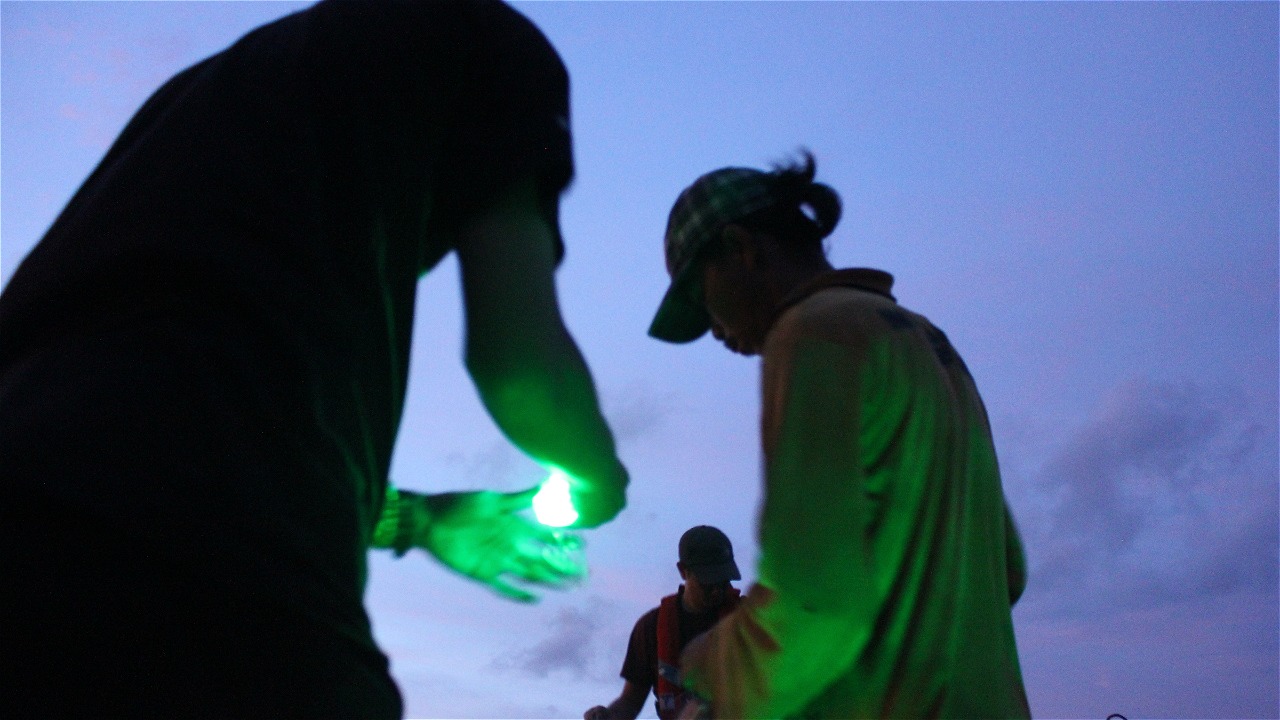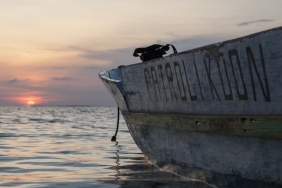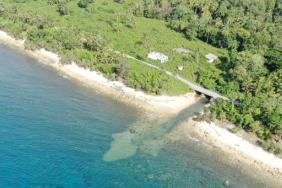BETTER A POMFRET THAN A TURTLE
By Dwi Ariyoga Gautama
"Let's draw our fortune", said Pak Asmadi as he started the engine of the boat he has owned for the past 5 years. The 1,317 m long drift gill net with 3 sizes of 5.5', 6.5' and 8' (inches) was stocked from 17.05 to 18.02 and started to be pulled two hours later. For fishermen from Paloh, Sambas Regency, catching white pomfret (silver pomfrey) is their main target at sea. This species has the highest selling value in Paloh, which ranges from Rp 30,000-115,000 depending on the grade.
Unlike the previous fishing trip, for the next 3 months Pak Asmadi and another fisherman, Pak Pendi, starting on April 12, 2104, are fishermen who support the trial of using green LED lights with WWF, KKP and NOAA in reducing the incidental catch (bycatch) of sea turtles. Mr. Asmadi's boat did not get a turn to use the lights this night, so the results of this night's catch were used as a comparison with the results of the catch using green LED lights. The process of recording catches on both research vessels was assisted by 1 observer per vessel who recorded the type, weight and selling price, as well as other catch information for each fishing trip.
Two people are needed to pull the gill net, equipped with gloves, Mr. Asmadi and his crew began pulling the net one by one, starting with the 8-inch one. Within ± 1 hour the net felt heavy when pulled. The catch has not yet been seen, but Mr. Asmadi has told us to be ready to handle turtles.
The turtles began to emerge from the darkness. The monofilament net that entangled the turtle began to be lifted onto the boat and Mr. Asmadi deftly began to release the net. However, because the net was already intricately coiled, Mr. Asmadi began to cut the net one by one to release the turtle. Before releasing the turtle back to the sea, the server identified the species and measured the length of the shell. Judging by the number of scales, the turtle was a Olive Ridley turtle (Lepidochelys olivacea) with a carapace arch measuring 47 cm. The remaining net was still long, so Pak Asmadi and his crew pulled the net again. However, 30 minutes later another Olive Ridley sea turtle was also caught on an 8-inch mesh size with a carapace arch size of 48 cm.
Both bycatch are very detrimental to fishermen. They have to spend money to repair damaged nets every time there is a turtle bycatch. Instead of catching turtles, we should get pomfret, complained Mr. Asmadi. Even so, there is still a local wisdom value that fishermen will not hurt turtles when caught, so wherever possible fishermen in Paloh save turtles that are caught.
The results of the trial on the use of LED lights in reducing turtle bycatch are not new. Since 2009, this technology has been tested in three countries, namely Mexico, Peru and Chile, and showed that at least 40-65% of turtle bycatch decreased and the selling value (catch value) of the catch tended to increase (Wang et al, 2013; Wang et al, 2010). Mr. Asmadi and other Paloh fishermen hope that the use of LED lights can also be effectively used in Paloh waters to avoid turtle bycatch and help increase the income of Paloh fishermen.





